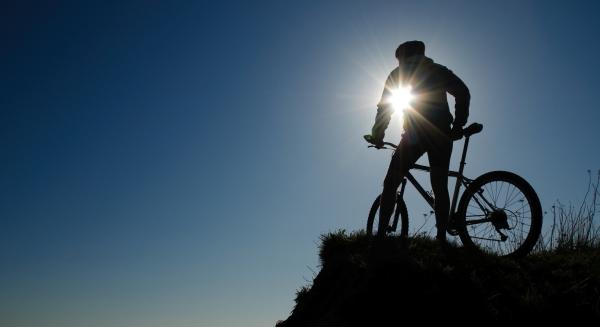
Can Cycling Crimp Sex for Men?

Dr. David Samadi is the chairman of urology and chief of robotic surgery at Lenox Hill Hospital in New York City and is a board-certified urologist and oncologist specializing in the diagnosis and treatment of urologic diseases, kidney cancer, bladder cancer and prostate cancer. Dr. Samadi also specializes in advanced, minimally invasive treatments for prostate cancer; is one of the few urologic surgeons in the United States trained in oncology, open, laparoscopic and robotic surgery; and was the first surgeon in the nation to successfully perform a robotic surgery redo. He contributed this article to Live Science's Expert Voices: Op-Ed & Insights.
With the quiet explosion in popularity of recreational bicycling in the United States, it's natural that men would wonder about the potential health effects of spending serious time on a bike. Men, research shows, account for almost all the growth in the pastime in the last three decades. A recent study both silences some of the most prevalent fears, which center on sexual dysfunction and infertility, and raises the specter of another. It suggests that prolonged cycling may be linked to higher risks of prostate cancer in men over age 50.
The research, published in the Journal of Men's Health, surveyed more than 5,200 male cyclists between 2012 and 2013. Researchers asked the men to report how many hours per week they spent biking and any experience with erectile dysfunction (ED) or a physician's diagnosis of infertility or prostate cancer. The researchers analyzed the data in relation to the men's cycling time, in categories ranging from less than 3.75 hours per week to more than 8.5 hours per week.
The results showed that men who logged more time on their bikes didn't suffer a higher incidence of ED or infertility than less-frequent cyclists. So the findings should thankfully put to rest the most common fears expressed by my cyclist patients, who know well how a narrow bike seat can press on and enclose sensitive areas. [Facts About Prostate Cancer (Infographic)]
But the surprising finding is that men who bike the most were much more likely to have been diagnosed with prostate cancer than the other men. Just less than 1 percent of all the men in the study reported the cancer diagnosis, while 3.5 percent of the most-frequent cyclists said they'd had prostate cancer. Among the least-frequent bikers, that proportion was only 0.5 percent.
How should these provocative findings be interpreted?
Firstly, I must emphasize, the finding does not prove a cause-and-effect link. And I'm simply not convinced that cycling actually causes a higher incidence of prostate cancer.
Sign up for the Live Science daily newsletter now
Get the world’s most fascinating discoveries delivered straight to your inbox.
A far more likely scenario is that biking influences the detection of this cancer. Specifically, the pressure cycling places on the prostate gland through its contact with the perineum raises blood levels of prostate-specific antigen (PSA), an enzyme released by the prostate that's found in higher concentrations among men with prostate cancer. My colleagues and I routinely train new urologists not to administer digital rectal exams to men before checking their blood PSA levels, because the prevailing wisdom is that any manipulation of the prostate gland bumps up those levels. So it seems likely that the higher PSA levels among male cyclists are spurring greater detection of prostate cancer.

In essence, the cycling isn't causing the prostate cancer — it's drawing more attention to it.
More definitive research is certainly needed to tease out these potential associations. But in the meantime, I don't think this news should deter any man from spending more time biking. We already know, for certain, that exercise and weight control reduce the risk of prostate cancer, along with numerous other ills, including cardiovascular disease and diabetes.
No good research has been done on the narrow, hard seats equipping many bikes, but men who are concerned about the effects on their prostate should acquire a wider, softer seat that provides more cushioning for the perineum. Beyond that, serious cyclists can use the recent study as a reason to aggressively seek PSA screenings and speak with their doctors about any concerns. By all means, however, stay on the bike; its benefits far outweigh any possible risks.
Follow all of the Expert Voices issues and debates — and become part of the discussion — on Facebook, Twitter and Google+. The views expressed are those of the author and do not necessarily reflect the views of the publisher. This version of the article was originally published on Live Science.










